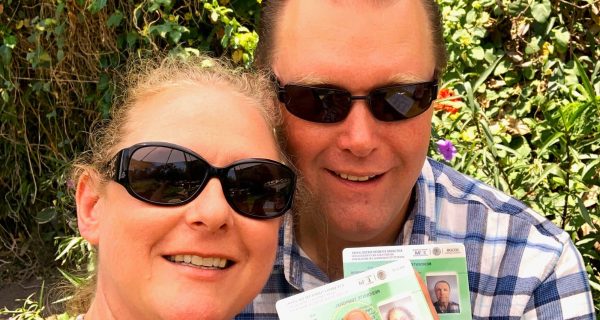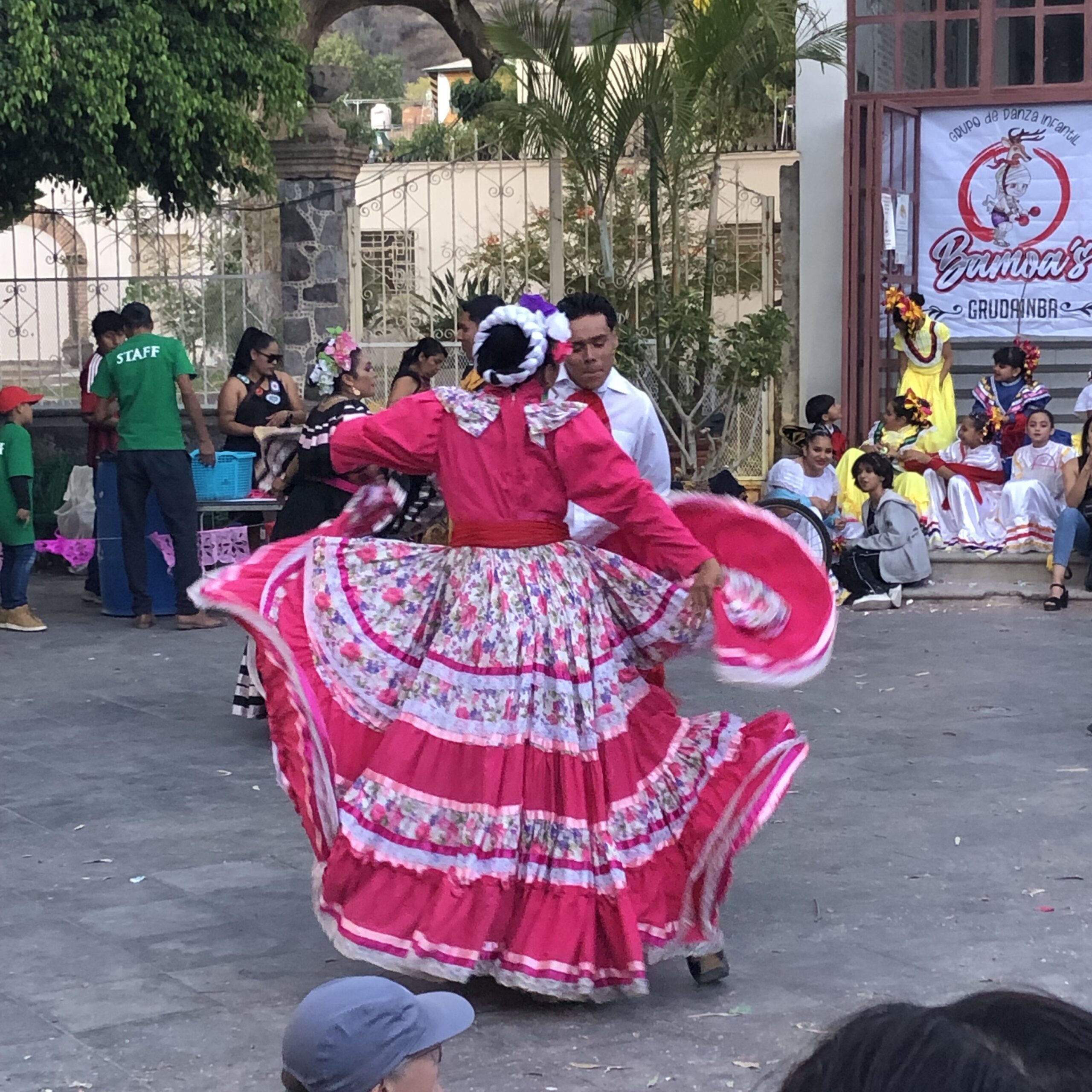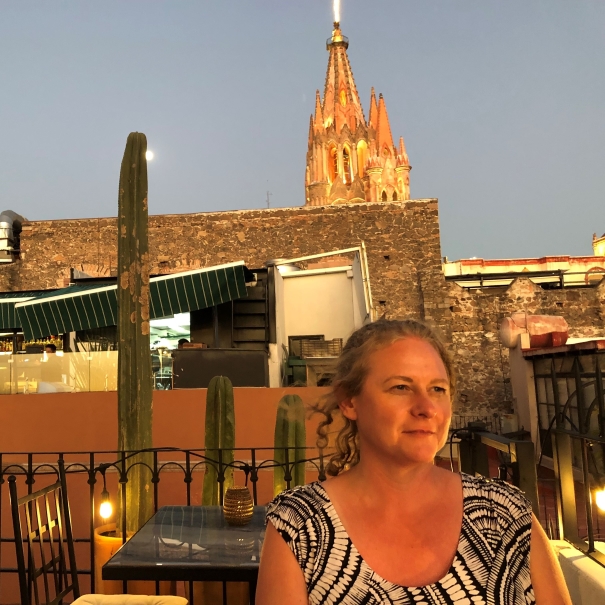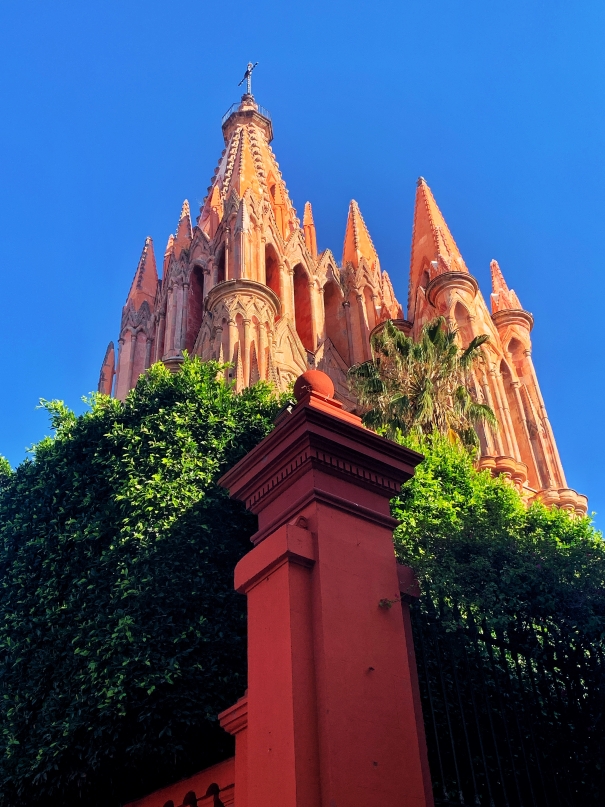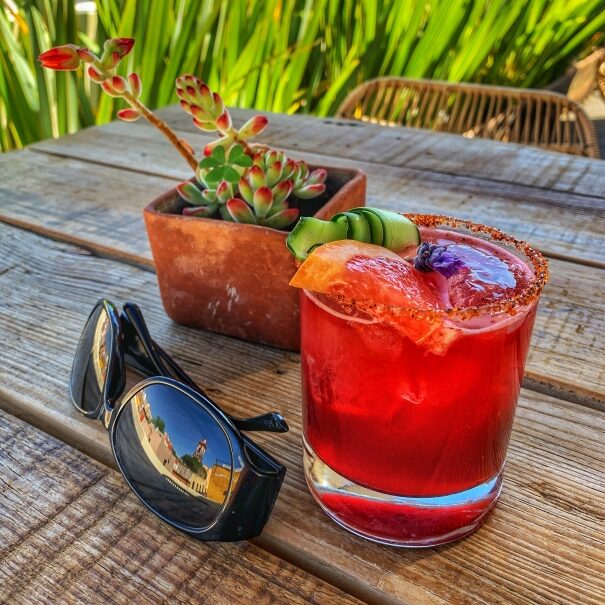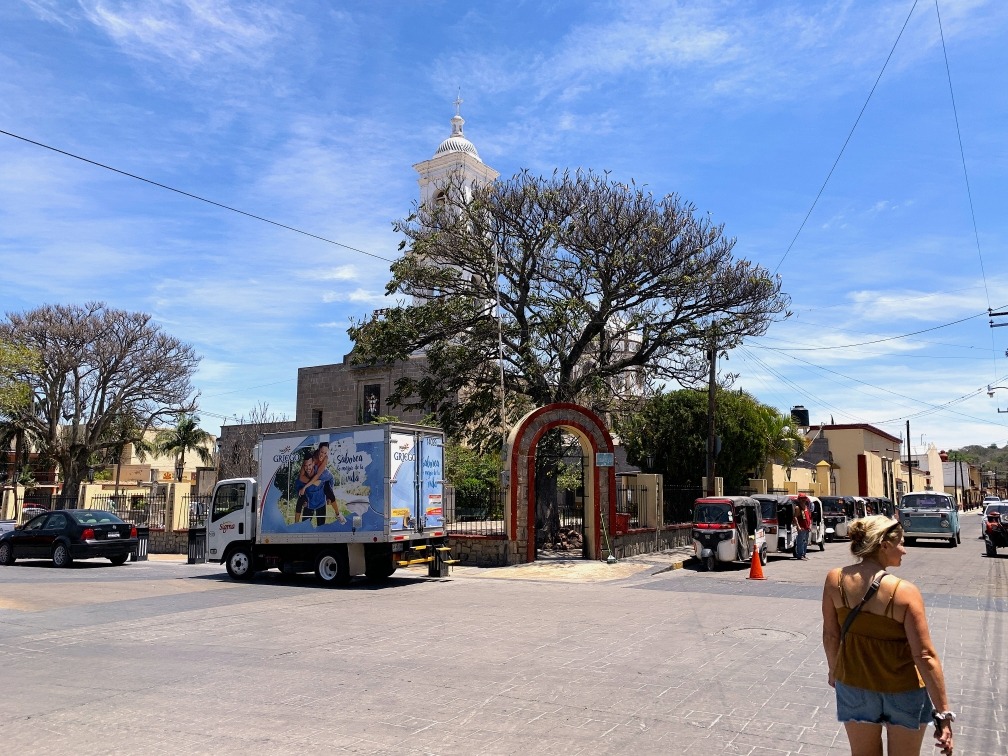

-
By
-
April 16, 2025
I’ve been living in Mexico for three years now without a car or a real need for a driving license in Mexico. Everything is walkable from my neighbourhood—groceries, markets, restaurants, are all within easy reach. But things are about to shift. In the next few months, we’ll be housesitting for friends whose home is tucked away, too far to walk for everyday supplies. In addition, our Canadian driver’s licenses expired at the end of February 2025.
Enter the dilemma: How do you get a driving license in Mexico?
Whether you’re an expat, a long-term traveller, or someone settling into a new rhythm of life here, getting a Mexican driver’s license might feel daunting—but it doesn’t have to be. In this guide, I’ll walk you through everything you need to know to get started, from requirements and documents to helpful tips. Let’s break it down step by step.
Before January 2025, the State of Jalisco recognized Canadian and American driver’s licenses in exchange for a Mexican driver’s license. You only had to pass a written exam to receive your Mexican driver’s license. This year, the law changed and now all Americans and Canadians also must complete the practical exam, which consists of parallel parking a car. Horrifying idea.
Step 1: Finding Out Exactly What Documentation is Required

I am not fluent in Spanish but have learned a lot since moving to Mexico. Not everyone speaks English, of course, we are in Mexico. It is a good idea to take a Spanish speaker with you if you are not fluent to make sure you understand the process. My good friend from Cuba agreed to come along. She is a wonderful translator and gracious with her time.
Together, we went to the Transito office in Chapala to obtain up-to-date information. Things do change. This is Mexico. One constant in Mexico is that nothing is constant in Mexico. Everyone tells you something different—it is best to go to the source, like we did.
After waiting in a short line outside under the warm late morning sun, we explained my position to the receptionist and asked about the required documentation. She concurred a Canadian driver’s license was no longer recognized and it did not matter if it was expired or not, the practical and theory test were both required. The following documentation for a new driving license in Mexico was also needed:
- CURP (document you receive from the government when you get your residency card)
- Proof of address ((A water bill, electricity (CFE), phone (Telmex, Telcel or other phone company), property tax or bank statement in your name and not older than 90 days))
- Official government-issued identification (valid passport)
- Temporary or permanent Mexico residence card
- All documents in original and copies (The sign on the wall says to bring originals and copies but they do not ask for the originals, however bring the originals in case they ask to see all the originals. Do not give them originals because you will not get them back, as reported by other expats.)
- Receipt for proof of paying the fee of 882 pesos (this is paid at the Recaudadora Estatal in Chapala). Price is subject to change.
Step 2: Paying the Fee at Recaudadora Estatal in Chapala to Get a Driving License in Mexico
The Recaudadora is a state collection office located in Chapala Centro, Jalisco, Mexico. The office handles various financial transactions and services for the local government. Typical services at such offices include payment of taxes, fines, and other government-related fees.
Go as early in the morning as possible, preferably be there as soon as the office opens as there will be a lineup. At the time of writing, the fee to obtain the license is only payable in cash (solo efectivo). You will need to sit in chairs until you are called forward to the desk. Make sure and have all your documentation with you, including your passport and residence card, just in case they ask to see everything. They will not keep your documents here, but they will give you a receipt for proof of payment. Keep the receipt and take it with you when you go for your test. You will need to give them the original receipt before you write the test.

Step 3: Go to the Transito office in Chapala to Get a Driver’s License in Mexico
You can do all these steps in one day if you begin first thing in the morning. As soon as you leave the Recaudadora, you can proceed to the Transito office in Chapala to write your exam and take the practical test. It is advised to make an appointment, but it is not necessary. They will honour appointments; however, the receptionist did not ask anyone what time their appointment was for, only if people were waiting in line who did have an appointment. She would then take those with appointments ahead of those without appointments.
Our wait was only about a half hour before she took my paperwork for review. If you hand in a bank statement, make sure to hand in all the pages indicated on the bottom corner, not just the first page. At first, I handed in the first page only, but she wanted all eight pages as indicated at the bottom of the bank statement. I was prepared and had the entire statement in tow.
On the registration form, you will need to provide an emergency contact, your blood type, and indicate if you are an organ donor or not. Then you are given another number to wait in line to write the theory test.
Step 4: The Theory Test to Get a Driving License in Mexico
You can download the written test information based on the Regulation of Transportation of the Government of the State. There are 103 questions to review but only ten of them are on the test. Study the street signs as the signs make up most of the test. You can download the English version here. Note, the questions are subject to change and the English translation is not great. A lot of the questions are lost in translation, but you will get the basics of what you need to know. You need 60 percent to pass the test.
Once your number is called, you will stand in another line to provide your biometrics and write the test.
Yes, biometrics. Your fingerprints, retinal scans, and photograph will be taken before completing any examination. The idea of getting a retinal scan or giving my fingerprints was unnerving—too much personal information. Take note: Mexico is much further ahead digitally than they are given credit for. This is a concern for many, yours truly included.
After biometrics, the test is next and provided in either English or Spanish on a computer. The multiple-choice test took one minute and 49 seconds to write. It was a breeze with a passing mark of 80 percent. There were two signs on the test not in the practice materials, and I have never seen them in Mexico before so likely those are the questions I got wrong.
Step 5: The Practical Test to Get a Driving License in Mexico
After completing the test, you walk out a barred door into the parking lot where all the other people are standing around waiting to take their practical test.
Setting the stage: The climax of the short driving test is a parallel park. But it is not a normal parallel park. While you are watching the others take their test, pay attention, because the shape may or may not be a square about 10 feet by 10 feet. There is no parking spot on this planet in the shape of the six pylons making up the parallel parking spot scenario set before us.
My Cuban friend and my husband were along for support. I was quite anxious about taking this test. After all, I can’t remember the last time I parallel parked. I did practice ahead of time in a typical parking spot shape, not something two car widths deep and wide.
One after another, we watched people slowly try to park in the spot. Some hit the pylons, some tried numerous times. One person even had the pylons moved so she could fit in better. No one failed.
“I don’t think it’s possible to fail this test.” My friend said.
I wasn’t so sure.
An elderly expat lady wearing a floppy hat who could hardly move independently came over to talk with us. She was shaking her head in disgust.
“I’ve been here three times, and I have not passed.” Maybe the fourth time would be a charm.
My turn came.
“¿Hablas español?” Inquired the examiner.
“Poquito,” I responded. He then waved over my friend to translate the rules.
The test starts the moment you enter the car. All the vehicles are parked in a dirt parking lot surrounded by a concrete building, a construction site with heavy equipment in operation, and a few swaying palm trees to shade the onlookers.
I was to drive through the parking lot and then stop at the entrance to the testing area, which was also dirt and grass. The directions were to then proceed forward and come as close to the concrete wall as possible, turn around the bend, and stop at the second set of pylons so the car could be measured and the first set of three pylons adjusted to my vehicle size from behind—a tiny, white Nissan March.
I was then to park in the square in three motions. If I hit a pylon, the test was over. My final spot was supposed to be about 20 centimetres away from the “curb”, which was another set of yellow-painted concrete blocks. Only two attempts were allowed.
Sounds easy, until you try to park in the square. It threw me off to the point where I had no idea what to do. The pylons in the rear were in my blind spots, making reverse an extreme challenge. Two attempts were used and I thought I’d see if he’d allow another chance.
Calling out the passenger side rolled-down window I questioned, “¿Uno mas?” One more?
“Uno mas.” He responded, holding up one finger, and looking slightly annoyed.
With a tongue as thick as a brick, I pulled out of the spot and mimicked the 45-degree angle of other attempters, cranking the steering wheel all the way to the right and backing up slowly. When it came time to straighten the wheels, I hit the curb and got hung up. Driving forward, the front wheels also ended up on the curb.
I failed.

Step 6: If You Need It
I was told to come back again on the next Friday morning, one week from the day of the original test and try again to get a driving license in Mexico. The good news is you do not have to make an appointment, or pay another fee. Just show up at 9:00 am when they first open, take your paperwork again, and get in line to take the test.
This time, the parking spot was a normal shape, and not a square, which I had practiced diligently for the day prior. Confused once again, I attempted to park.
Borrowing a car with a backup cam made the world a difference in eliminating the blind spots of the rear pylons. On the third attempt, I proceeded until the car was parked properly. There was no way I was making eye contact in case he motioned for me to quit. In the correct position, I came to a stop and looked out the passenger side window at the examiner.
“Aprobado.”
I passed.

Step 7: Getting Your Driving License in Mexico
Once you have passed your tests, you will get your license card within a half hour or so of passing the practical exam. The card comes with a tap feature and microchip—additional digital freedom concerns.
While we waited, we made some observations:
Video and photos of the practical test are not allowed.
There was a young Mexican girl in her early twenties, who took her practical test right after me. She was a pretty lady dressed up in a skirt. Her boyfriend had come along with her for moral support. We watched her park and she nailed it on the first try. A round of applause erupted as she came back to the group. Her angle? Go slow. We talked with her boyfriend after she passed, and he was so nervous his heart was beating out of his chest. She had also come last week on the same day as me and failed. The parking spot, he said, was much larger than this week (corroborating my story). She practiced and practiced all week to pass. It paid off. Success.
Another Mexican woman in her mid-twenties arrived in medical scrubs. She took the practical test, failed, and then drove herself away. It makes you wonder, how many drivers here in Mexico don’t have a driver’s license?
Next Step: The Adventure Begins with a Driving License in Mexico
There you have it—the surprisingly human, slightly bureaucratic, and oddly heartwarming process of getting your driving license in Mexico. From test-day nerves to unexpected cheerleaders and mysteriously high-tech license cards, it’s an experience offering more than legal permission to drive. It’s a little slice of life, Mexican style—unpredictable, communal, and kind of charming. And while not everyone drives away with a license, everyone drives away with a story. Buckle up—the road ahead just got a whole lot more interesting.
Want stories, insights, and inspiration for living a life beyond borders? Subscribe to A Case for Freedom Fridays and get it delivered straight to your inbox.
The information provided in the Liberty Travel Coach blog does not constitute legal, tax or financial advice. It does not consider your circumstances, objectives, legal and financial situation or needs. Before acting on any information in the Liberty Travel Coach blog you should consider the appropriateness of the information for your situation in consultation with a professional advisor of your choosing.
All photos by Charlotte Tweed

Charlotte Tweed is a relocation travel coach with a goal to take you on a journey where you don’t just visit—you live it. Graduating with a Travel and Tourism Honours diploma and coaching certification with the Travel Coach Network, Charlotte is channeling all her passion and skills into Liberty Travel Coach to help people relocate to unique liberty destinations. Charlotte resides in Mexico and will help you find a home where you can have freedom and live in a community of like-minded people.
Liberty Travel Coach promotes a lifestyle of personal responsibility and liberty, potentially within self-sufficient communities. A change to your environment, community, and lifestyle through Charlotte’s one-on-one coaching services and relocation travel retreats will help you feel renewed, happier, healthier, safer, and free to live the self-sustaining life offered by liberty-loving communities.





